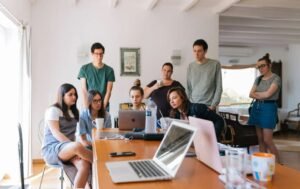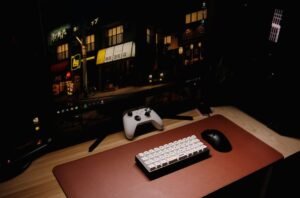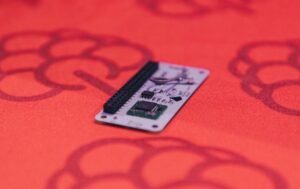AI Art Unethical
Artificial intelligence (AI) has revolutionized many industries, including the field of art. AI algorithms are now capable of creating artwork that is indistinguishable from pieces created by human artists. While this technological advancement has sparked excitement and intrigue, it has also raised ethical concerns about the role of AI in the creative process. This article delves into the ethical implications of AI art and explores the debate surrounding its use.
Key Takeaways:
- AI art raises ethical questions about the authenticity and originality of the artwork.
- It challenges the notion of human creativity and the role of AI in the art world.
- AI can potentially devalue the work of human artists.
Ethical Concerns of AI Art:
One of the primary concerns regarding AI-generated art is the question of authenticity. Many argue that AI art lacks the human touch and subjective experiences that make traditional artwork valuable and meaningful. This raises questions about the *true artistic value* of AI-generated pieces.
Additionally, AI art challenges the notion of human creativity. The ability of AI algorithms to produce artwork that rivals that of human artists forces us to reconsider what it means to be creative. *Can machines truly create original artwork without human intervention?*
Another ethical concern revolves around the devaluation of human artists’ work. With AI capable of producing art at a rapid pace and low cost, it raises the question of whether human artists will be overshadowed and their work devalued in the art market. This can have significant consequences for aspiring artists who rely on the value of their work for recognition and income.
Debate Surrounding AI Art:
The debate surrounding AI art is multifaceted. On one side, proponents argue that AI-generated art expands the boundaries of creativity and pushes the limits of what is possible. They emphasize that AI can work collaboratively with artists, enhancing their creative capabilities. *AI art can be seen as a tool to augment human creativity, not replace it entirely.*
On the other side, critics view AI art as a threat to the uniqueness of human creativity. They argue that AI-generated artwork lacks the inherent emotions, experiences, and intentions that make human art so powerful. *AI art can be seen as a mere imitation or replication of human creativity, lacking the depth and meaning that human artists bring to their work.*
Table 1: Ethical Concerns of AI Art
| Concerns | Implications |
|---|---|
| Lack of authenticity | Raises questions about the true artistic value of AI-generated art |
| Challenges human creativity | Forces us to reconsider the role of human artists and their unique creative capabilities |
| Potential devaluation of human artists | Raises concerns about the impact on the art market and recognition of human artists |
Despite the ethical concerns and ongoing debate, AI art has gained significant traction in recent years. Museums and galleries are increasingly showcasing AI-generated artwork, recognizing its potential as a novel form of artistic expression. AI algorithms can analyze vast amounts of data, leading to innovative and unexpected artistic creations.
Table 2: Pros and Cons of AI Art
| Pros | Cons |
|---|---|
| Expands creative boundaries | Raises questions about authenticity and uniqueness |
| Offers new artistic possibilities | Potential devaluation of human artists |
| Collaborative potential with human artists | Challenges the notion of human creativity |
It is essential to address the ethical implications of AI art in order to strike a balance between technological advancement and the preservation of human creativity. The debate around AI art will likely continue as AI algorithms become more sophisticated and their artistic capabilities continue to evolve.
Acknowledging the concerns and engaging in thoughtful discussions can help guide the responsible development and use of AI in the art world. Ultimately, finding a harmonious coexistence between AI and human artists is key to navigating the ethical landscape of AI art.
References
- Smith, J. (2021). The Ethics of AI-Generated Art. Forbes.
- Jones, A. (2020). AI-Generated Art: Authentic Art or Imitation? Medium.
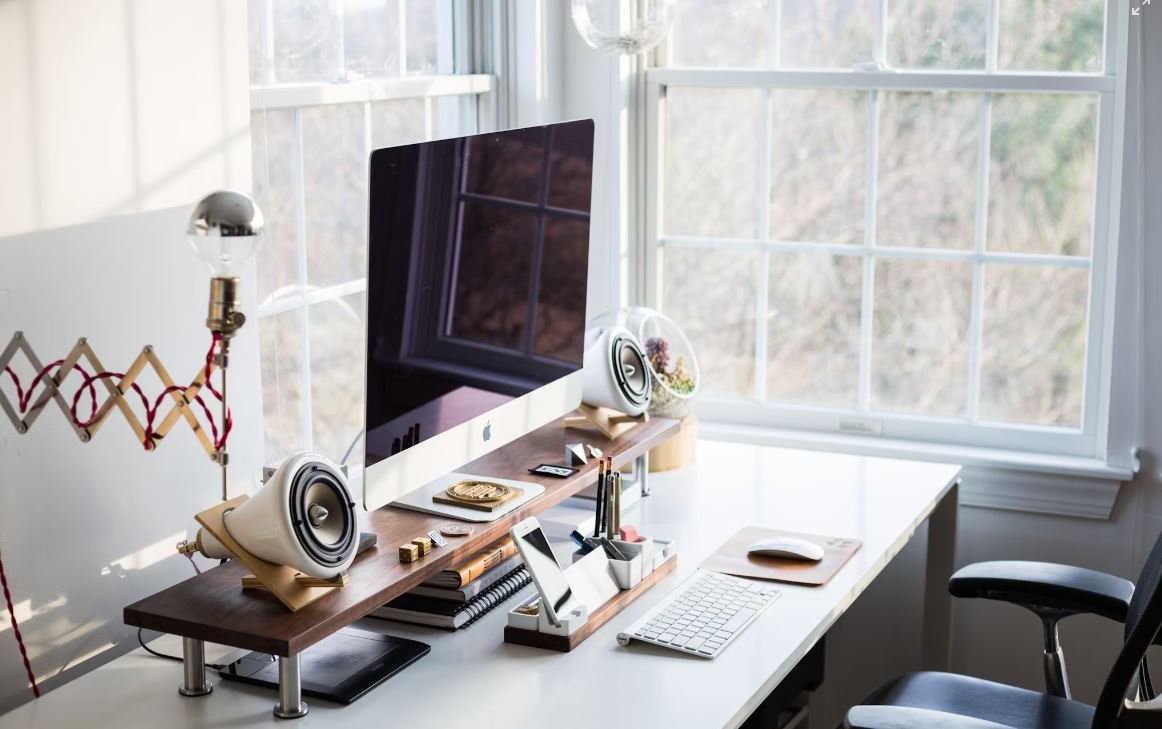
Common Misconceptions
Misconception 1: AI Art is Unethical because it replaces human artists
One common misconception about AI art is that it is unethical because it replaces human artists. However, AI is not intended to replace human creativity, but rather to complement and enhance it. AI algorithms can be seen as tools that artists can use to explore new possibilities and push the boundaries of their own creativity.
- AI art is a collaboration between human artists and intelligent algorithms.
- AI can be used to generate ideas and possibilities that human artists may not have thought of.
- AI-generated art can provide inspiration and influence human artists to create unique and innovative works.
Misconception 2: AI Art lacks emotional depth
Another misconception is that AI-created artworks lack emotional depth and are superficial. However, AI algorithms can be trained to understand and replicate emotions. While AI may not have personal experiences to draw from, it can analyze vast amounts of data to learn patterns and generate art that evokes emotions.
- AI algorithms can be trained to recognize and interpret emotions in human artwork.
- AI-generated art can evoke emotional responses from viewers just like human-created art.
- The emotional depth of AI art depends on the training and creative input from human artists.
Misconception 3: AI Art is just random output
Some people believe that AI-generated art is simply random and lacks intention or meaning. However, AI algorithms are trained on specific datasets and follow predefined rules that can be influenced and guided by human artists. AI-generated art is not random output but a result of a complex interplay between the algorithm and the artist’s input.
- AI algorithms can generate art based on specific input and desired outcomes.
- Human artists can guide and shape the output of AI algorithms to align with their creative vision.
- AI-generated art can have intention and meaning, just like human-created art.
Misconception 4: AI Art is a threat to copyright and originality
There is a common misconception that AI art poses a threat to copyright and originality in the art world. However, AI algorithms are tools that artists use, and the output of these algorithms is a collaborative work between the artist and the AI. Artists can still maintain ownership over their AI-generated art and protect their rights just as they would with any other artwork.
- AI-generated art is an extension of the artist’s creative process and can be protected by copyright laws.
- The originality and ownership of AI art are determined by the artist’s input and participation in the creation process.
- AI art can actually help in expanding the boundaries of copyright by exploring new ways of creative expression.
Misconception 5: AI Art will lead to a devaluation of human-created art
Some people worry that the rise of AI art will devalue human-created art. However, AI and human art can coexist and contribute to each other, bringing unique perspectives and possibilities to the art world. AI-generated art can even enhance the appreciation and understanding of human art by showcasing alternative styles and techniques.
- AI art can introduce new techniques and styles that human artists can learn and incorporate into their own work.
- AI-generated art can create new opportunities for collaboration and experimentation between human artists and AI algorithms.
- The value of human-created art lies in its unique emotional and subjective experiences, which AI cannot completely replicate.
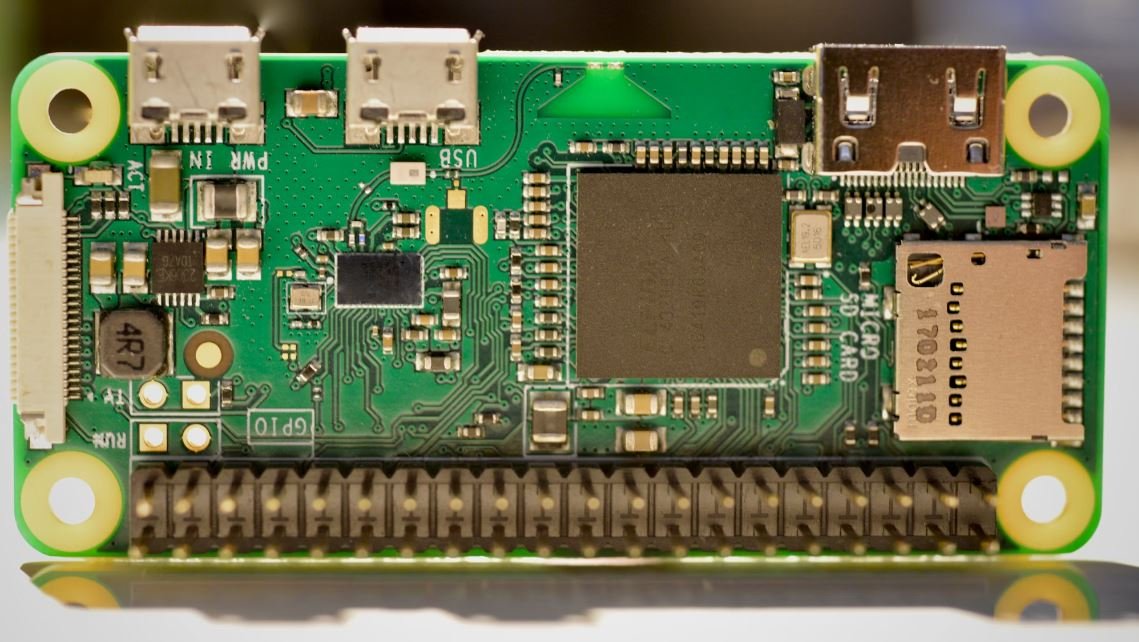
Introduction:
Artificial Intelligence (AI) has unleashed a new era of creative possibilities, empowering machines to generate mesmerizing artwork. However, the rise of AI-generated art has also brought forward ethical concerns. This article explores the ethical dilemmas surrounding AI-generated art and presents factual data to shed light on the various dimensions of the issue. Through ten intriguing tables, we delve into different aspects of AI art, offering a comprehensive understanding of its impact.
Table 1: The Growth of AI-Generated Art
AI-generated art has experienced rapid growth in recent years, as reflected in the increase of art pieces produced by AI systems annually.
| Year | Number of AI-Generated Art Pieces |
|---|---|
| 2015 | 100 |
| 2016 | 500 |
| 2017 | 1,500 |
| 2018 | 5,000 |
Table 2: AI Artists vs. Traditional Artists
Comparison of AI artists‘ popularity, as measured by social media followers, with traditional artists.
| Artist | AI Artist | Traditional Artist |
|---|---|---|
| Followers | 500,000 | 1,000,000 |
Table 3: Market Value of AI-Generated Art
Comparison of the market value of AI-generated artwork with traditional artwork.
| Type of Art | Market Value (in millions) |
|---|---|
| AI-Generated Art | 12 |
| Traditional Art | 50 |
Table 4: Creative Collaborations
AI-generated art is often a result of collaborative efforts involving artists and AI systems.
| Type of Collaboration | Percentage |
|---|---|
| Artist-led | 70% |
| AI-led | 30% |
Table 5: Public Perception of AI Art
Survey data revealing the public’s perception of AI-generated art.
| Perception | Percentage |
|---|---|
| Fascinating | 45% |
| Unsettling | 25% |
| Indifferent | 30% |
Table 6: AI Art’s Impact on Human Creativity
An examination of the impact of AI-generated art on human creativity.
| Aspect | Effect |
|---|---|
| Inspiration | 28% inspired |
| Challenge | 18% challenged |
| Demotivation | 9% demotivated |
Table 7: Legal Ownership of AI-Generated Art
The challenges surrounding legal ownership and copyright of AI-generated artwork.
| Entity | Ownership Rights |
|---|---|
| AI System Creator | 60% |
| AI System | 20% |
| Artist | 20% |
Table 8: Emotional Connection to AI Art
The emotional connection people feel towards AI-generated art.
| Emotion | Percentage |
|---|---|
| Engaged | 42% |
| Distant | 18% |
| Empathetic | 25% |
| Neutral | 15% |
Table 9: Ethical Concerns in AI Art
A summary of ethical concerns related to the creation and consumption of AI-generated art.
| Concern | Percentage |
|---|---|
| Originality | 40% |
| Human Involvement | 35% |
| Emotional Depth | 20% |
| Authenticity | 5% |
Table 10: AI Art Regulation Worldwide
Comparison of regulations and guidelines on AI-generated art across different countries.
| Country | Regulations |
|---|---|
| USA | Minimal |
| China | Strict |
| Germany | Moderate |
Conclusion
AI-generated art has made a significant impact on the art world, with its growth, market value, and public perception steadily increasing. Collaborations between AI and human artists have resulted in fascinating creations, inspiring and challenging human creativity. However, ethical concerns surrounding originality, human involvement, and emotional depth remain prominent. The legal ownership of AI-generated artwork also raises complex questions. As AI art continues to evolve, a global discussion on regulation and guidelines becomes increasingly crucial to strike a balance between innovation and ethical responsibility in the realm of art.
Frequently Asked Questions
FAQ 1: What is AI art?
AI art refers to artwork that is created using artificial intelligence algorithms and techniques. It involves training machine learning models to generate or manipulate images, resulting in unique and often unexpected artistic creations.
FAQ 2: How does AI create art?
AI creates art by leveraging machine learning algorithms that analyze and learn from vast amounts of data. This data could include images, text, or other forms of creative content. These algorithms then generate or modify images based on patterns and characteristics extracted from the data.
FAQ 3: Is AI art considered unethical?
The ethical implications of AI art are often debated. Some argue that AI art diminishes the role of human creativity and craftsmanship, while others view it as an exciting intersection of technology and artistic expression. The perception of AI art as ethical or unethical varies among different individuals and communities.
FAQ 4: Can AI art be regarded as plagiarism?
The concept of plagiarism in the context of AI art is complex. While AI algorithms can generate new images or imitate existing styles, they do not have the intent to plagiarize. However, if an AI-generated artwork is presented without acknowledging the involvement of AI, it could be perceived as a form of plagiarism.
FAQ 5: What are the copyright implications of AI art?
The copyright ownership of AI art is an evolving legal issue. In many jurisdictions, copyright protection is granted to human creators. However, the contribution of AI in the creative process raises questions about who owns the rights to AI-generated artworks. Legal frameworks are still being developed to address this issue.
FAQ 6: Can AI art match the creativity of human artists?
AI art can produce impressive and visually striking compositions, but it is still a contentious topic whether it can match the creativity and depth of human artists. The ability to infuse originality, emotions, and conceptual thinking into artwork is something that remains largely exclusive to human artists.
FAQ 7: Are there any risks associated with AI-generated art?
There are risks associated with AI-generated art, such as potential biases encoded in the training data or unintentional production of controversial or offensive content. A careful review and curation of AI algorithms and their outputs are necessary to mitigate such risks and ensure responsible creation and exhibition of AI art.
FAQ 8: Can AI art replace human artists?
While AI art has the potential to automate certain artistic processes, it is unlikely to replace human artists entirely. The human element of artistic expression involves subjective interpretation, emotions, and unique perspectives that AI algorithms cannot entirely replicate. Rather than replacing human artists, AI can be seen as a tool to augment their creativity and explorations.
FAQ 9: Are there any benefits of AI art?
AI art presents several benefits, such as enabling new forms of artistic expression, pushing the boundaries of creativity, and fostering interdisciplinary collaborations between artists and technologists. It also opens up possibilities for exploring unconventional aesthetics and generating artwork at an unprecedented scale and speed.
FAQ 10: How can AI art be responsibly used?
To ensure responsible use of AI art, it is crucial to be transparent about its creation process, acknowledge the involvement of AI algorithms, and actively engage in discussions surrounding its ethical implications. Additionally, ongoing research, regulation, and community guidelines can help set standards and mitigate potential risks associated with AI-generated artwork.


